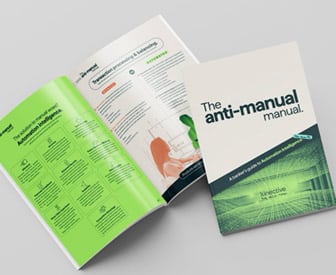When it comes to building financial health, there are three fundamental concepts intrinsic to a customer’s journey: math, money and data. Whether a potential customer is fresh out of college or a first-time homebuyer, everything from the types of loans they are eligible for, the rates they can get, how much they are able to save and the class of home or vehicle they can afford hinges on mastery of these concepts. Unfortunately, the complex nature of the financial services industry overall can make it difficult for the consumer to do so.
While credit unions, specifically, have always been vested in the member first and foremost, the advent of digital tools makes it easier than ever before to deliver the kinds of positive member experiences that equip them to achieve financial health — regardless of where they are on their financial journey. With the right personalized tools and education, credit union members don’t have to be experts in math, money and data as they go through their financial journey, but rather feel empowered to achieve financial health.
Let’s break these down on a more granular level and how digital tools can transform math, money and data:

Join industry’s leading AI conference - free passes available!
Ai4 is coming to Las Vegas, August 12-14 2024. Join thousands of executives and technology innovators at the epicenter of the AI community.
Read More about Join industry’s leading AI conference - free passes available!

Creating A Community with CQRC’s Branch Redesign
Find out how SLD helped CQRC Bank to create the perfect harmony of financial services, local culture, and the human touch in their branch transformation.
Read More about Creating A Community with CQRC’s Branch Redesign
Math: When we think about math as it relates to a member’s banking experience, determining how much money they are bringing in and what they can afford to spend is a key consideration in understanding the full scope of their financial health. For example, most people don’t realize how much they’re spending on multimedia each month, making digital features like a recurring expense tracker that can help them track and understand recurring expenses extremely valuable — and, especially crucial — in a subscription-fueled era.
According to a recent survey, the average consumer spends $219 per month on subscription services, more than 2.5 times the amount they originally thought. By offering a resource that breaks down expenditures, credit unions are putting the power back in the member’s hands by helping them easily visualize and evaluate their spending habits, leading to more informed decision making and budgeting.
Read more: Should Banks Ramp Up Budgeting Tools?
Money: Determining where a member spends their money is a second critical consideration in the path toward financial health. Through tools that automatically categorize expenditures by type (i.e., gas, clothing, food, rent or vehicle payments), credit unions can help members easily gain a clear picture of their spending without having to create budgets manually.
Credit unions can also offer educational resources to help members understand the long-term impact of their spending on their financial health as it relates to credit scores, which can impact what kinds of accounts and rates a member can get. Digital credit score tools allow members to monitor their credit, access credit history and gain real-time insights into improving their finances.
Another educational tool is integrating financial literacy as part of the digital banking experience, offering members the ability to take financial literacy courses and learn more about the financial industry in real-time.
Data: Data is critical for credit unions to provide a personalized banking experience, tailoring services to each member’s unique financial journey. For instance, credit unions can optimize a member’s experience by cleansing the data, or stripping the coded point of sale data, so that when a member logs in to view their banking dashboard, information about a specific transaction is easy to understand.
While financial institutions are still slow to adopt artificial intelligence (AI), research shows that AI applications can not only decrease operational costs but take the member experience to the next level. Typically, members log into a digital banking platform to check their account balance. However, AI-enabled digital tools can take this understanding a step further. By translating data for members, these tools can estimate members’ free cash flow and offer insights on their spending and saving habits.
Dig deeper:
Finally, many credit unions are exploring new ways to leverage data. For instance, digital tools can track typical cash inflows, outflows and deposits, allowing the system to proactively alert members if they might not have enough funds for a recurring expense, like rent. This approach can guide members toward long-term financial health by helping them avoid costly surprises and make more informed decisions.

‘I’ve Got Your Back Banking’
So, with all of this in mind, how can credit unions make it easy for members to access digital banking tools? In addition to offering these tools free of charge to members through a credit union website or mobile app, associates on the branch side can act as in-branch digital ambassadors to potential members to communicate the benefits of digital tools. This type of marriage, between physical and digital, for example, is an important component of elevating the overall relationship to one that is not just transactional, but more importantly, relational, especially for the branches.
Beyond the convenience factor of digital tools that work behind-the-scenes for members, credit unions are committed to creating memorable banking experiences that transcend this. From the tailored alert tracking an individual’s spending to the interaction that individual has with an associate at a credit union branch, the “I’ve got your back” mentality that is essential for today’s banking industry is felt at each point of a member’s journey toward financial health.
Ryan Jandris is senior vice president of digital strategy at Landmark Credit Union. He is responsible for identifying and driving enterprise-wide digital initiatives, optimizing the digital experience for members and ensuring the credit union’s digital strategy is aligned with organizational goals and member needs. Utilizing member feedback and data analytics, Jandris leads innovation, strategy and market delivery of digital products and services to enhance member engagement and satisfaction. He ensures the organization is adhering to regulatory requirements related to digital banking and follows industry best practices. Jandris has more than two decades of experience in financial services product management and has led strategic digital transformation strategies for both credit unions and banks.







